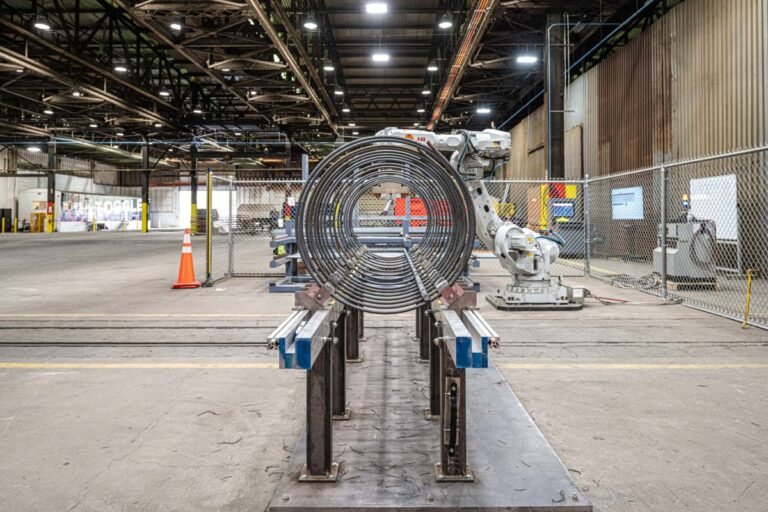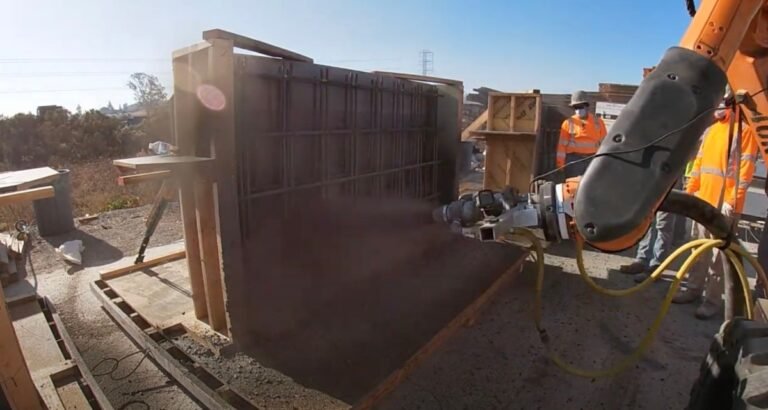
In some parts of the world (read: Japan, primarily), eldercare has been an important robotics focus for decades.
In Tel Aviv, meanwhile, Intuition Robotics has been promoting a “companion” robot since 2016 or so.
The latest version of the robot features design tweaks, more powerful hardware and — of course — generative AI integration.
The company is exploring other avenues with generative AI, as well here.
“One example is the ability to paint or write poems together, activities that contribute to cognitive wellness and creativity,” Intuition notes.

Burro has been on our radar since early 2020, when the company (then Augean) participated in a TechCrunch Robotics pitch-off.
The wonderfully named Burro Grande is — as the name suggests — a big new member of the family.
“In simple terms, Burro Grande is a bigger Burro,” says Andersen.
This Burro Grande is “Pallet-scale”, which means it can carry 1,500 lbs and tow 5,000 lbs.
Burro Grande, includes several safety features, including 3D LIDAR, and all Burro Grandes come with Burro Operating System Software v 5.0 which includes a Lidar-based SLAM algorithm, which enables GPS denied navigation.”The Grande can be ordered starting today.

Google’s DeepMind Robotics researchers are one of a number of teams exploring the space’s potential.
The newly announced AutoRT is designed to harness large foundational models, to a number of different ends.
In a standard example given by the DeepMind team, the system begins by leveraging a Visual Language Model (VLM) for better situational awareness.
A large language model, meanwhile, suggests tasks that can be accomplished by the hardware, including its end effector.
LLMs are understood by many to be the key to unlocking robotics that effectively understand more natural language commands, reducing the need for hard-coding skills.

More recently, the potential use of weaponized robots by law enforcement has been a political lightning rod in places like Oakland and San Francisco.
Earlier this week, I spoke about the bill with Massachusetts state representative Lindsay Sabadosa, who filed it alongside Massachusetts state senator Michael Moore.
Does the bill apply to law enforcement as well?
And what we’ve heard from law enforcement repeatedly is that they’re often used to deescalate situations.
We haven’t had law enforcement weaponize robots, and no one has said, “We’d like to attach a gun to a robot” from law enforcement in Massachusetts.

For the next few weeks, TechCrunch’s robotics newsletter Actuator will be running Q&As with some of the top minds in robotics.
Large language models like ChatGPT can allow robots and humans to communicate in natural language.
Robot “singularities” are a fundamental problem for all robot arms; they are very different from Kurzweil’s hypothetical point in time when AI surpasses humans.
Robot singularities are points in space where a robot stops unexpectedly and must be manually reset by a human operator.
For repetitive robot motions, singularities can be avoided by tedious manual fine-tuning of repetitive robot motions to adjust them such that they never encounter singularities.

We’re wrapping up our end-of-year robotics Q&A series with this entry from Deepu Talla.
Over the past several years, NVIDIA has established itself a major platform for robotics simulation, prototyping and deployment.
Previous Q&As:What role(s) will generative AI play in the future of robotics?
Simulation: Models will be able to accelerate simulation development, bridging the gaps between 3D technical artists and developers, by building scenes, constructing environments and generating assets.
These GenAI assets will see increased use for synthetic data generation, robot skills training and software testing.

I’ve spent much of the past year discussing generative AI and large language models with robotics experts.
It’s become increasingly clear that these sorts of technologies are primed to revolutionize the way robots communicate, learn, look and are programmed.
Well-funded Oregon-based startup Agility has been playing around with the tech for a while now using its bipedal robot, Digit.
Agility notes, “Our innovation team developed this interactive demo to show how LLMs could make our robots more versatile and faster to deploy.
MIT CSAIL’s Daniela Rus also recently told me, “It turns out that generative AI can be quite powerful for solving even motion planning problems.

The consolidation of Vorwerk also affects the stake in the US company Neato Robotics, which has been 100 percent owned by the Vorwerk Group since 2017. Neato has brought valuable…

Robotics technology continues to develop despite the recession, as evidenced by recent startups that are attempting to create more affordable and reliable robotics construction equipment. Robotics manufacturers have been able…

Rapid expansion of the sector has led to a number of innovative startups, who are focusing on automating different tasks in the construction process. These startups are trying to offer…













